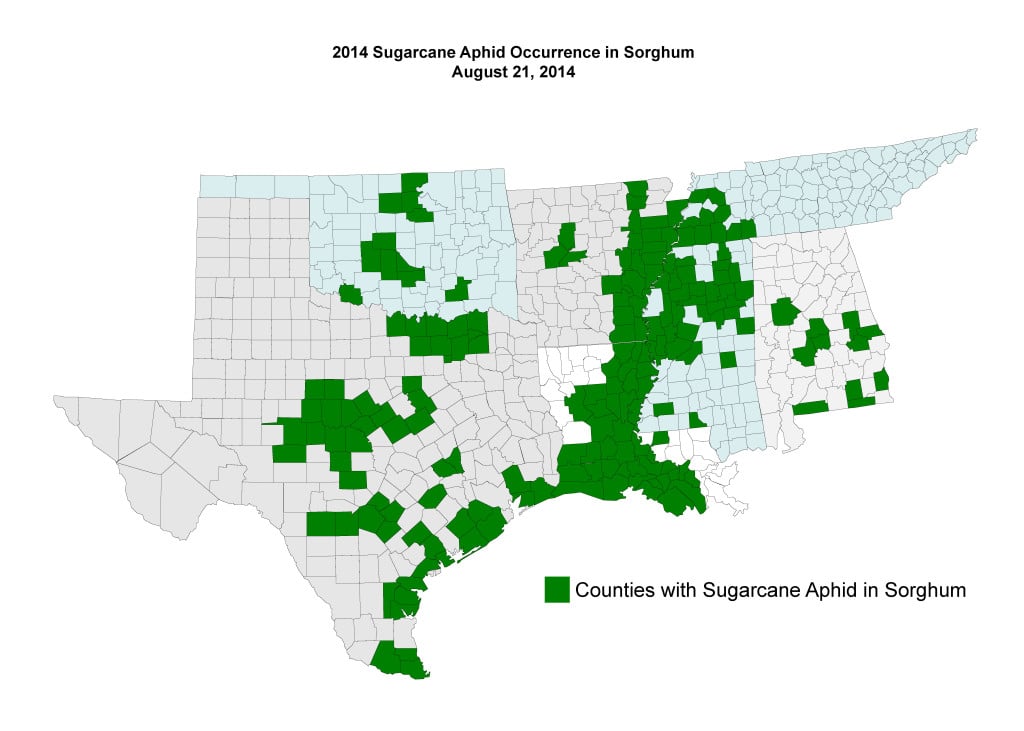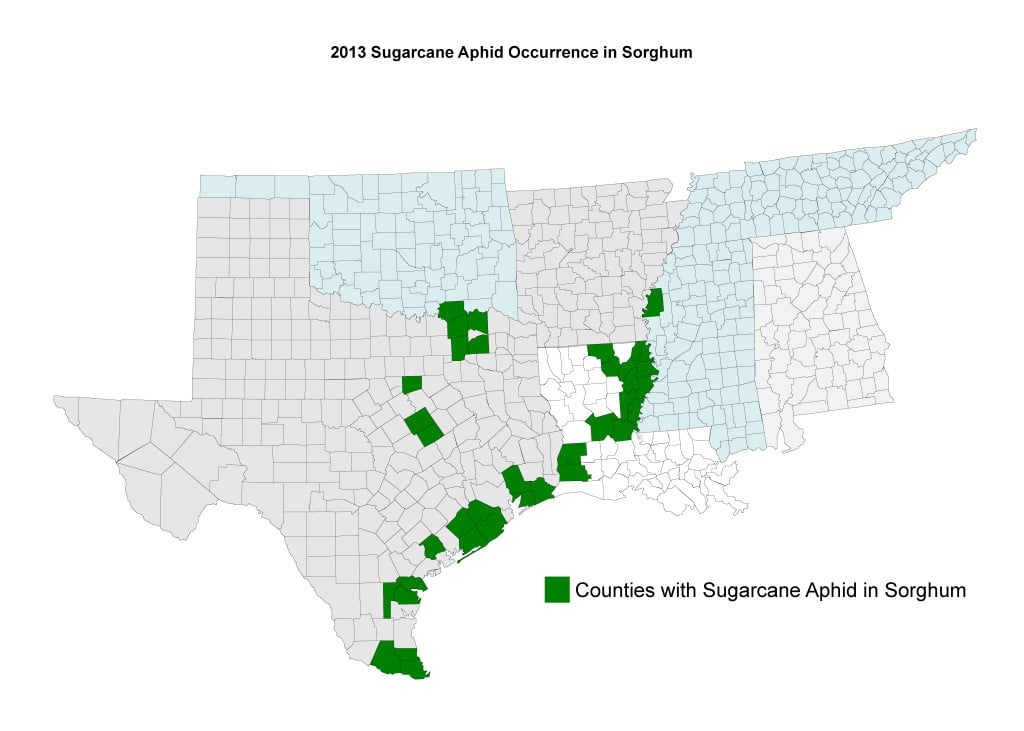Below is the updated, known distribution of sugarcane aphids in 2014, including confirmed finds on sorghum in Tennessee. This aphid is certainly present in at least low numbers in other areas. The second map shows the distribution of this invasive pest in 2013, showing the impressive spread of this invasive pest since last year.


I’m also sharing a picture forwarded to me by Dr. Gus Lorenz (University of Arkansas) showing the accumulation of sugarcane aphids on a combine (below). The presence of large numbers of aphids (honey dew) during harvest can gum up combines, and their have been examples of combines catching on fire. This is something we are better off avoiding.

Remember that we now have a Section 18 that allows the use of Transform WG (1 – 1.5 oz/acre) for the control of sugarcane aphids in sorghum. I’m aware of some double-cropped sorghum planted behind wheat. In these cases, Lorsban or generic equivalents are an option for sugarcane aphids if the application is made more than 45 days before harvest. Suggested rates are 24-32 oz/acre.
To avoid flaring sugarcane aphids, do not make automatic (unjustified) applications for sorghum midge. Consider using Lorsban, rather than pyrethroid insecticides, if aphids are present and a midge application is needed. You can control midge with rates of Lorsban as low as 8-12 oz/acre, but consider higher rates if sugarcane aphids are also present. Similarly, I would suggest avoiding pyrethroid insecticides or premixes that contain a pyrethroid for applications targeting corn earworm or fall armyworm in heads. Products such as Belt (2-3 oz/acre) and Prevathon (14 oz/acre) are less likley to flare aphids. They are more expensive, but they also tend to provide more consistent control of these pests.

